-
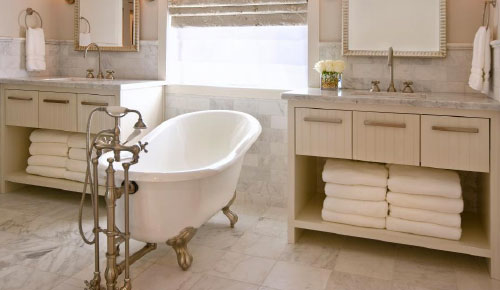
Understanding Bathroom Vanity Tops
 Share on Facebook
Share on Facebook
May 11, 2017
Buying a vanity top is really simple when you understand the different types.
There are many attributes and decisions when it comes to buying a new bathroom vanity top or replacing the entire vanity cabinet, which is why the Edge Showroom provides every customer with a FREE Kitchen and Bath Designer, which you can schedule with by clicking here. You can also check out our brands by clicking here.
To get started, make sure to look for a vanity top that’ll be as resistant as possible to soap, water, toothpaste, makeup, and cosmetics, as well as any alcohol- and acetone-based liquids.
Replacing a vanity top is a great do-it-yourself home project since you can opt to replace the vanity top and keep the cabinet. Removing and adding a new cabinet requires a ton of work and definite construction skills.
Here are the five typical types of bathroom vanity tops…
- Solid Surface
- Ceramic Tile
- Granite and Marble
- Laminate
- Wood
SOLID SURFACE
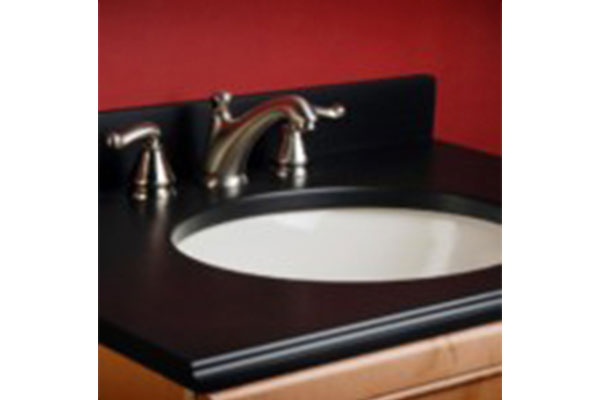
Solid surface vanity tops feature many of the advantages of stone tops.
These tops are typically cast from an acrylic resin (that sometimes includes crushed stone; particularly quartz). Solid surface tops require little maintenance and they’re extremely durable.
Intense heat and heavy falling objects can cause some damage to any solid surface. Scratches, abrasions, and even minor burns can be fixed with fine-grade sandpaper.
Solid surface vanity tops are available in beige, white, imitation stone, and pastels, in stock vanity tops with integrated sinks.
CERAMIC TILE
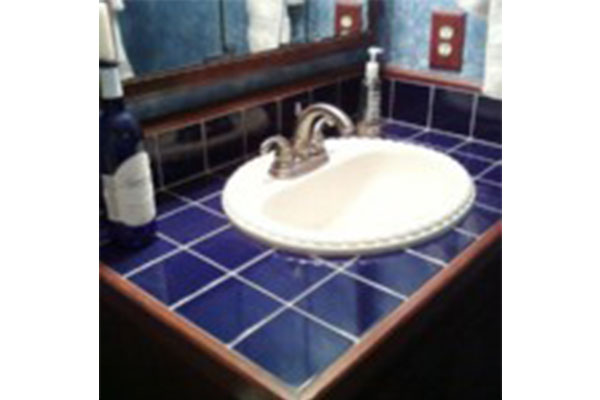
Ceramic tile makes a durable and attractive finish for bathroom vanity tops.
It’s available in many colors, designs, and textures.
The biggest drawback and challenge is that the grout lines can trap dirt and grow mildew. There are some newer, pricier grouts and sealers that can help alleviate the challenge.
Using ceramic can be challenging for the novice to work with. A slightly irregular look can be appropriate for rustic, unglazed quarry tile, but most other tile varieties demand greater precision. Pre-grouted tile sheets, or sheets of mosaic tile on a mesh backing, will make it far easier to space the tiles evenly.
GRANITE AND MARBLE
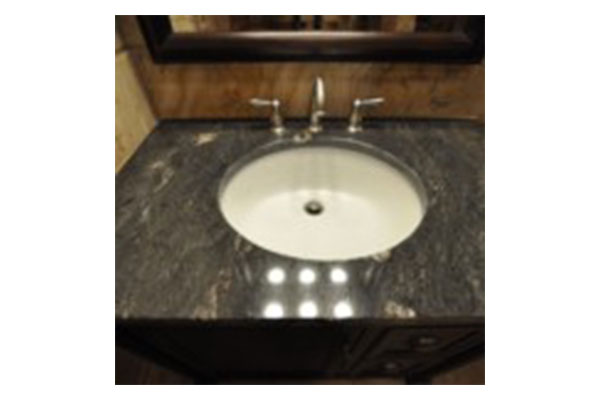
Though granite and marble are absolutely beautiful, they require careful thought as they’re both pricy. In most cases, the price becomes irrelevant as granite and marble are stunning to look at and rank high in durability – meaning they should last longer, potentially giving you a nice ROI if you decide to sell your home.
Please note that marble stains and scratches easily. Granite shrugs off most stains, save for grease.
If a solid sheet of stone for your bathroom vanity top is beyond your budget, you may substitute it with granite or marble tiles at a better price.
Cultured marble is less expensive. It’s made from real chips of natural marble embedded in plastic. You can get it in sheet form and in standard counter dimensions of 19 and 22 inches deep. Cultured marble comes with or without a wash basin molded into it. It’s fairly easy to clean, but must be well cared for. If scratched, it cannot be resurfaced. Follow the manufacturer’s recommendations for what type of finish to apply to cultured marble to best protect it.
LAMINATE

Laminate offers good value, price, and performance.
It’s the most widely used countertop material in bathrooms and kitchens.
Manufacturers market laminates under different brand names. Laminate features a stack of thin plastic layers bonded together under heat and pressure.
Laminate vanity tops are easy to clean. They’re resistant to water and most stains. One drawback is that laminates can easily burn, wear thin, and dull over time. Hard blows can also chip or dent the plastic, meaning your only option would be to replace it.
It’s available in many colors and patterns, and finishes range in texture from high-gloss smoothness to a mottled, leather-like look.
You can buy prefabricated laminate vanity tops or have them customized with a hole for the sink cut where needed. They’re fairly easy to install.
Also, you can apply pieces of laminate material to an installed particleboard countertop, but a professional will do the job best.
WOOD
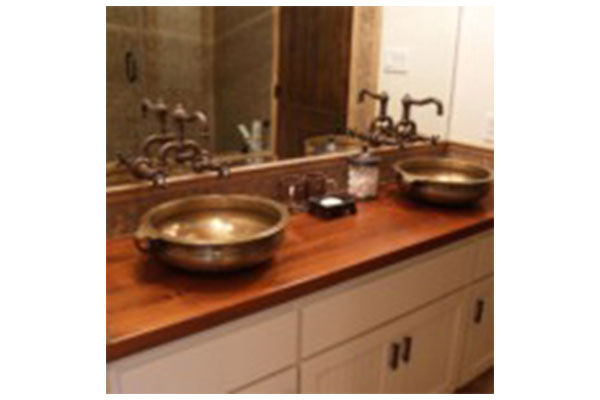
Wood is attractive, versatile, and easy to install.
It’s especially vulnerable to water damage, as well as porous, which makes it difficult to keep clean.
All hardwood and softwood vanity tops must be well sealed with polyurethane or marine varnish. Make sure to seal around the edges of plumbing fixtures so standing water can’t seep in and cause wood rot.
Maple butcher block is a popular countertop material in the the kitchen, and it sometimes appears in bathrooms as well. Available in 24″, 30″, and 36″ widths, butcher block is thicker than vanity tops, so to install it you may need to modify plumbing connections.
Hopefully you learned quite a bit about bathroom vanity tops!
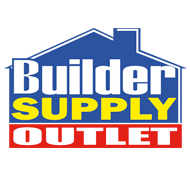
Feel free to stop into Builder Supply Outlet or the Edge Showroom with any home improvement questions you may have regarding bathroom vanity tops, remodeling, sinks, tile, backsplash, cleaning, sealing, grout, windows, kitchen cabinets, construction, contractors, designing/installing a new kitchen or bathroom — or anything else. We can help you through the entire design and installation process from A-Z. Or call us anytime in Broadview, IL at 1-708-343-3900. You can also make an appointment to meet with one of our Edge Kitchen and Bathroom designers at no charge by clicking here.
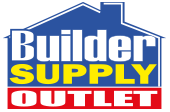
- My account Cart
-
OPEN TO THE PUBLIC | Store Hours and Information708.343.3900 OPEN TO THE PUBLIC Store Hours and Information
- 708.343.3900 Español Schedule Your FREE
Design Consultation
